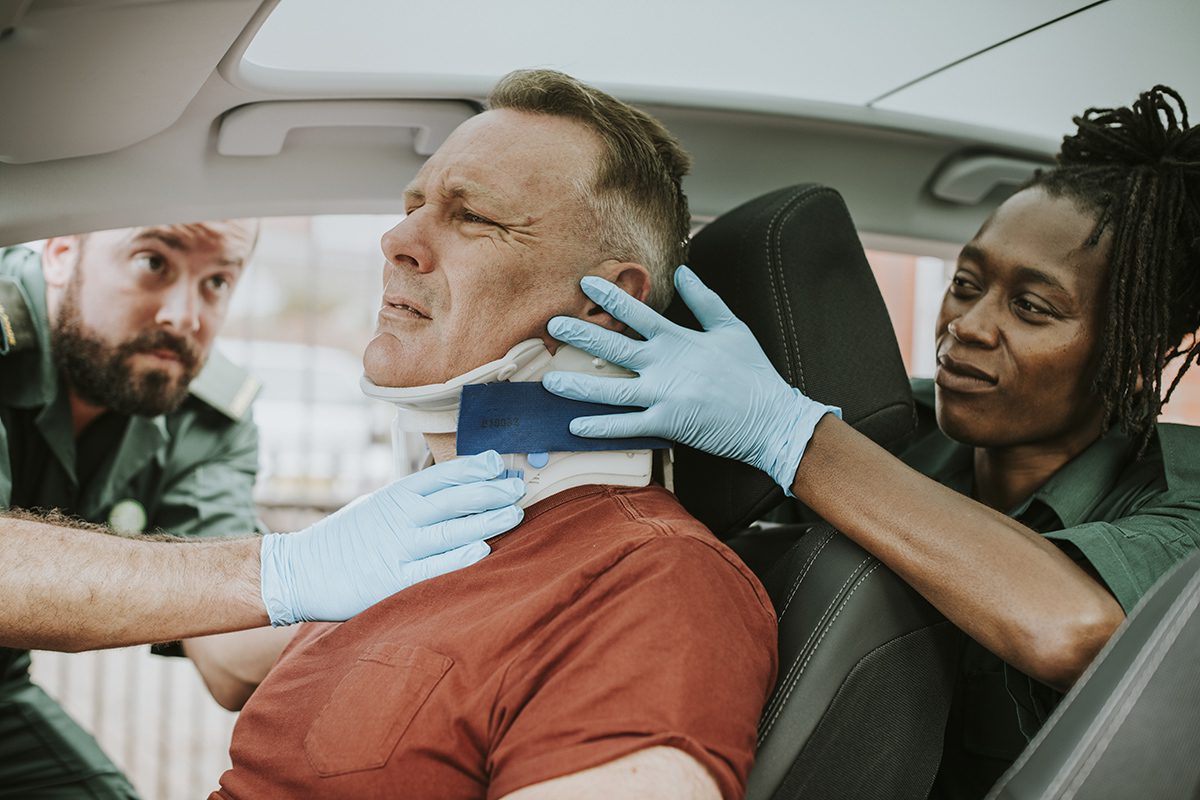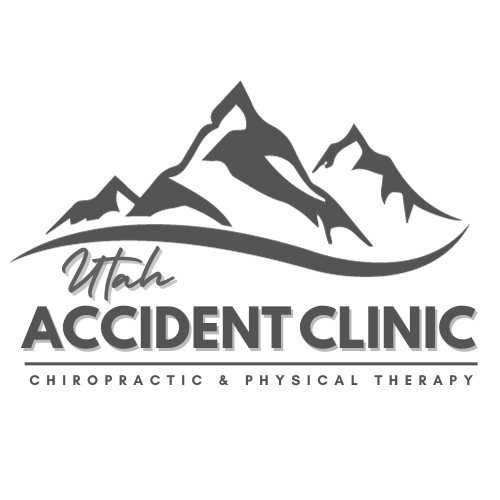How chiropractic care can help with whiplash and neck pain after a car accident is a crucial topic for those who have experienced this traumatic event. This post will discuss the intricacies of whiplash and neck pain from motor vehicle accidents and how chiropractic care can provide relief.
By understanding how chiropractic care can help with whiplash and neck pain after a car accident, you’ll be better equipped to manage your recovery process holistically.
Understand the Symptoms of Whiplash
Whiplash is a frequent trauma in auto collisions, particularly those that involve being struck from behind. The sudden, forceful movement of the head and neck forward and then backward can cause strain to muscles, ligaments, and vertebrae in the neck – a condition known as whiplash.
Recognizing the signs and symptoms of whiplash after a car accident is crucial for seeking timely treatment from a chiropractor at Utah Accident Clinic.
Symptoms of Whiplash
- Pain: Neck pain or stiffness is one of the most common symptoms associated with whiplash.
- Limited range of motion: You may find moving your head side-to-side or up-and-down difficult due to muscle tightness.
- Tenderness: The muscles in your neck may feel tender or sore when touched.
- Headaches: Headaches at the base of your skull can indicate that you have suffered whiplash.
- Dizziness: Some individuals experience dizziness due to disrupted nerve signals caused by their injuries.
- Fatigue: Your body’s natural response to trauma can cause fatigue following a whiplash accident.
Risk Factors for Developing Whiplash
The severity and likelihood of developing whiplash depend on age, gender, vehicle speed during impact, seatbelt usage, and position within the vehicle (driver vs. passenger), among others. For example:
- Middle-aged individuals are more prone to whiplash due to decreased flexibility and muscle strength.
- Women are likelier to develop whiplash than men, possibly because they typically have less neck muscle mass and strength.
When to Seek Help for Whiplash Symptoms
If you have any symptoms of whiplash after a car accident, seek medical attention promptly to avoid potential long-term complications. Early intervention can help prevent long-term complications associated with untreated whiplash injuries. Consult an experienced chiropractor specializing in treating accident-related injuries such as whiplash and neck pain.
It’s essential to heed your chiropractor’s advice for home care, including taking it easy, applying cold or hot compresses, doing gentle stretches, and maybe using OTC painkillers if necessary.
By understanding the symptoms of whiplash and taking appropriate action after a car accident, you can improve your chances of full recovery without lasting discomfort or limitations in mobility.
Whiplash can be debilitating, and understanding its symptoms is essential for proper treatment. Pinpointing the sources of neck distress can aid in deciding which treatment is most appropriate for you.
Identify the Causes of Neck Pain
Injury to the neck muscles and whiplash are among the most frequent causes of neck pain following a car accident.
Comprehending the fundamental source of your neck soreness is essential for obtaining proper chiropractic care and attaining enduring relief.
This section will discuss some common causes of neck pain following a car accident and how Utah Accident Clinic’s specialized chiropractic treatments can help alleviate discomfort.

Whiplash Injuries
Whiplash injuries are among the most common causes of neck pain after a car accident. They occur when the head is suddenly jerked forward or backward due to an abrupt change in vehicle speed or direction during impact.
Rapid movement can damage the cervical spine’s muscles, ligaments, nerves, and spinal discs (neck area). Symptoms may include stiffness, soreness, limited range of motion, and headaches originating from the base of the skull.
Chiropractors have extensive experience diagnosing and treating whiplash-related neck pain through targeted adjustments that realign vertebrae and reduce inflammation.
Muscle Strains & Sprains
In addition to whiplash injuries, muscle strains & sprains can also contribute to post-accident neck pain. These soft tissue injuries occur when muscles or ligaments become overstretched or torn during sudden movements experienced in an auto collision.
Symptoms may include localized swelling or bruising around affected areas and general discomfort while moving the neck.
Chiropractic care can help alleviate pain caused by muscle strains and sprains through gentle manipulation techniques that promote healing and reduce inflammation.
Spinal Disc Injuries
Spinal disc injuries, such as herniated or bulging discs, are another potential cause of neck pain following a car accident. These injuries occur when the gel-like substance inside spinal discs leaks out due to trauma, causing pressure on nearby nerves.
Symptoms may include sharp, shooting pains in the neck or radiating discomfort down one arm. Chiropractors can diagnose spinal disc injuries using advanced imaging techniques and develop personalized treatment plans that address underlying issues contributing to your pain.
Nerve Compression & Damage
Sometimes, auto accidents can lead to nerve compression & damage in the cervical spine region, resulting in chronic neck pain. This type of injury occurs when surrounding tissues (such as bones or muscles) place excessive pressure on nerves running through the neck.
Symptoms may include tingling sensations or numbness along affected nerve pathways. By utilizing chiropractic adjustments and other non-invasive therapies, skilled practitioners can help relieve nerve compression symptoms while promoting overall spinal health.
Neck discomfort may have diverse origins, but the most typical cause is whiplash from an auto mishap. It’s essential to properly diagnose any injury related to an accident to provide the best treatment plan for relief and recovery.
Next, we’ll examine how chiropractic care can help diagnose these injuries.
Diagnosing Whiplash Injuries
After a car accident, it is crucial to have your injuries adequately diagnosed by a healthcare professional. Chiropractors are well-equipped to diagnose whiplash injuries and determine the best treatment for your needs.

The process typically involves several steps:
- Evaluating medical history: Your chiropractor will ask about any previous neck or head injuries and details about the car accident that may have caused your current symptoms.
- Physical examination: A thorough physical exam will assess pain levels, range of motion, muscle strength, and any other signs of injury in the neck and shoulders.
- X-rays or imaging studies: If necessary, your chiropractor may order X-rays or other imaging studies, such as an MRI or CT scan, to get a better understanding of the extent of damage in your cervical spine.
Sometimes, diagnosing whiplash can be challenging due to its complex nature and varying individual symptoms. Early detection is necessary for proper management and healing from this type of trauma.
Differentiating Between Whiplash Grades
To accurately diagnose whiplash injuries and develop an appropriate treatment plan tailored specifically for you, chiropractors use a grading system called Quebec Task Force (QTF) Classification System.
This system categorizes whiplash into five grades based on severity:
- Grade 0: No complaints or physical signs related to neck pain;
- Grade 1: Neck pain, stiffness, or tenderness without any physical symptoms;
- Grade 2: Neck pain with musculoskeletal symptoms such as decreased range of motion and muscle spasms.
- Grade 3: Neck pain with neurological symptoms like numbness, tingling, or weakness in the arms;
- Grade 4: Potentially severe injuries to the neck structures, such as fractures or dislocations.
Your chiropractor will use this grading system and their clinical findings to determine the most appropriate treatment plan for your whiplash injury.
The Importance of Prompt Diagnosis
If you suspect you have suffered a whiplash injury after a car accident, it is essential to seek prompt medical attention.
Early diagnosis and treatment can help prevent long-term complications such as chronic neck pain, post-traumatic stress disorder (PTSD), and reduced quality of life.
Timely intervention by a skilled chiropractor may also minimize legal disputes related to personal injury claims following an accident. Diagnosing whiplash injuries accurately is crucial for ensuring effective treatment and recovery.
Chiropractors are well-trained professionals who can diagnose these injuries using comprehensive evaluations and advanced imaging techniques when necessary. If you suspect that you have suffered from a whiplash injury due to a car accident, it is crucial that you promptly consult with an experienced chiropractor specializing in treating neck pain and whiplash injuries. Don’t delay seeking medical attention, as early intervention can significantly affect your recovery.
Chiropractic care can help alleviate the pain and discomfort associated with whiplash injuries, allowing accident victims to experience relief. By treating neck pain with chiropractic care, patients can experience a reduction in symptoms while restoring mobility to their necks.
Treat Neck Pain with Chiropractic Care
After a car accident, neck pain can be debilitating and significantly impact your daily life. Fortunately, chiropractic care offers an effective solution to alleviate discomfort and promote healing.
By addressing the root cause of your pain through spinal adjustments, soft tissue therapy, and rehabilitative exercises, you can experience lasting relief from whiplash-related symptoms.
Spinal Adjustments
Chiropractic manipulations, or spinal adjustments, are vital in chiropractic treatment for whiplash-related pain, aiming to realign vertebrae that may have been displaced due to the accident’s impact.
These targeted movements help realign vertebrae that may have shifted out of place during the collision. Proper alignment in the cervical spine (neck) relieves pressure on nerves, reducing inflammation and eases muscle tension.
Soft Tissue Therapy
In addition to spinal adjustments, many chiropractors utilize soft tissue therapy techniques to address muscle tightness or stiffness resulting from whiplash injuries.
This may include massage therapy, trigger point release, or myofascial release – all aimed at relaxing tense muscles surrounding affected joints to reduce pain and improve overall function.
Rehabilitative Exercises
Your chiropractor will likely recommend specific rehabilitative exercises to perform at home as part of your comprehensive treatment plan. These particular exercises are intended to help strengthen weak muscles, increase suppleness, and revive movement in the neck area.
You can expedite your recovery process and prevent future injuries by consistently performing these targeted movements.
Personalized Treatment Plans
Due to the varying nature of whiplash and neck pain, with factors such as accident severity, pre-existing conditions, and overall health status playing a role in individual experiences, chiropractors develop personalized treatment plans.
As a result, chiropractors develop personalized treatment plans tailored to your unique needs. This may involve a combination of spinal adjustments, soft tissue therapy techniques, rehabilitative exercises, or other complementary therapies like acupuncture, ultrasound therapy, or electrical stimulation.
Treating neck pain after a car accident doesn’t have to be an overwhelming task – by seeking chiropractic care from experienced professionals like those at Utah Accident Clinic, you can begin the journey toward healing and reclaiming your quality of life.
Chiropractic treatment can be a viable option for addressing neck soreness resulting from an auto collision. By improving the range of motion with chiropractic adjustments, you can reduce discomfort and improve your overall quality of life.
Improve Range of Motion with Chiropractic Adjustments
Car accidents can lead to decreased range of motion in the neck and spine due to severe damage. Chiropractic adjustments are an effective way to help improve this range of motion after a car accident by realigning the vertebrae and reducing inflammation.
The Role of Chiropractic Adjustments in Restoring Mobility
Chiropractors use manual manipulation techniques called adjustments to apply controlled force on specific joints, helping restore their normal function and mobility. These adjustments can alleviate pain caused by misaligned vertebrae or muscle tension resulting from whiplash injuries.
- Cervical Manipulation: This technique involves applying gentle pressure on the neck’s joints to increase flexibility and reduce stiffness caused by whiplash.
- Thoracic Spine Mobilization: This method targets the upper back area where many people experience discomfort following a car accident. It helps release tension in muscles surrounding the spine, improving overall mobility.
- Lumbar Roll Technique: Often used for lower back pain relief, this adjustment focuses on realigning lumbar vertebrae that may have shifted out of place during an accident.
Beyond Pain Relief: The Benefits of Improved Range of Motion
In addition to providing immediate pain relief, chiropractic care offers long-term benefits for those recovering from car accidents.
By restoring proper alignment within your spine and promoting increased flexibility through targeted exercises (as discussed later), you’ll be better equipped to avoid future injury while enjoying improved quality-of-life outcomes such as:
- Reduced Headaches: Whiplash injuries can lead to chronic headaches due to muscle tension and misaligned vertebrae. Chiropractic adjustments help alleviate these issues, reducing the frequency and severity of headaches.
- Better Posture: Proper spinal alignment promotes good posture, essential for overall health and well-being. A balanced spine reduces strain on muscles, ligaments, and joints while improving circulation.
- Injury Prevention: By addressing underlying musculoskeletal imbalances caused by car accidents, chiropractic care helps prevent future injury by ensuring your body functions optimally.
If you’re experiencing neck pain or limited range of motion after a car accident, seeking professional help from a qualified chiropractor is crucial. They will assess your condition and develop a personalized treatment plan that includes chiropractic adjustments designed to improve mobility in affected areas while promoting long-term healing.
Chiropractic manipulation can enhance mobility, reduce discomfort and swelling, and restore typical activity. Physical therapy exercises are another way to strengthen muscles weakened by an accident injury.
Strengthen Muscles with Physical Therapy Exercises
In the wake of a car crash, fortifying your neck and shoulder muscles is critical to diminish torment and forestall further harm. Chiropractic care often includes physical therapy exercises that target these areas, helping you regain strength and flexibility.
A. Stretching Exercises for Neck Pain Relief
Gentle stretching exercises can help alleviate stiffness and improve the range of motion in the cervical spine after an auto accident. Some effective stretches include:
- Neck Tilts: Gently tilt your head forward, bringing your chin towards your chest, then slowly return to the starting position.
- Lateral Neck Stretches: Slowly bend your head sideways toward one shoulder without lifting the opposite shoulder; hold for a few seconds before returning to the center and repeating on the other side.
- Nose-to-Armpit Stretch: Turn your head slightly toward one side while looking down at an angle as if trying to touch nose-to-armpit; hold this stretch for several seconds before switching sides.
B. Strengthening Exercises for Improved Stability
In addition to stretching, targeted strengthening exercises can help stabilize weakened neck muscles following a motor vehicle accident. These may include:
- Cervical Retraction (Chin Tucks): While keeping eyes level, gently pull your chin straight back like making a double chin; hold briefly before releasing.
- Iso-Metric Resistance Exercise: Place one hand on the side of your head and gently push against it while resisting with neck muscles; hold for a few seconds before switching sides.
- Shoulder Blade Squeezes: Sit or stand upright, pull shoulder blades together as if trying to touch them behind you; hold briefly before releasing.
C. Incorporating Therapeutic Massage
In addition to physical therapy exercises, therapeutic massage can help relieve tension in the neck muscles after a car crash. A licensed massage therapist can use deep tissue, trigger point therapy, and myofascial release techniques to address muscle imbalances and promote healing.
D. Following a Customized Treatment Plan
Your chiropractor will develop a personalized treatment plan based on your needs and injury severity following an auto accident. This may include spinal adjustments, therapeutic exercises, massage therapy, and other modalities designed to reduce pain and restore function in the cervical spine.
By incorporating these strengthening exercises into your recovery process under the guidance of a skilled chiropractor or physical therapist, you can effectively rebuild weakened neck muscles after an accident – ultimately reducing chronic pain symptoms while preventing future injuries from occurring.
By strengthening the muscles with physical therapy exercises, accident victims can help to reduce their pain and discomfort. Additionally, by making lifestyle changes, they can prevent future injury from occurring.
Prevent Future Injury with Lifestyle Changes
After receiving chiropractic care for whiplash and neck pain, it’s essential to implement lifestyle changes that can help prevent future injuries. Focusing on proper posture, ergonomics, and stress management can reduce the risk of recurring neck pain and further complications after a car accident.
Proper Posture
Maintaining proper posture is crucial in preventing strain on your neck muscles. Align your head and shoulders to avoid stressing the cervical spine. Some tips for maintaining good posture include:
- Avoid slouching while sitting or standing.
- Keep both feet flat on the ground when seated.
- Sit back in chairs with lumbar support to maintain the natural curve of your lower back.
- Avoid cradling a phone between your ear and shoulder – use headphones or speakerphone instead.
Ergonomics at Work and Home
Ergonomic adjustments at work and home can significantly reduce neck pain after a car accident. Consider making these changes:
- Adjust computer monitors to be at eye level to minimize straining your neck muscles while working.
- To maintain proper posture, create an ergonomic workstation using adjustable chairs, desks, and keyboard trays to maintain an appropriate posture.
- Take frequent breaks from sitting or standing for long periods, changing positions regularly to avoid muscle fatigue.
Stress Management Techniques
Managing stress is essential in preventing neck pain after a car accident. Stress can cause tension in the muscles surrounding your neck, leading to discomfort and reduced mobility. Incorporate these stress management techniques into your daily routine:
- Meditation or mindfulness practices help calm the mind and relax tense muscles.
- Incorporating deep inhalations and diaphragmatic breathing can help mitigate tension and diminish worry.
- Regular physical activity like walking, swimming, or yoga can improve overall well-being while reducing stress.
Incorporating these lifestyle changes and chiropractic care will help prevent future injuries and improve the quality of life after a car accident. Remember that consistency is critical when implementing new habits – be patient with yourself as you adjust and seek professional support if needed.
FAQs
Does Chiropractic Care Help with Whiplash?
Yes, chiropractic care can be effective in treating whiplash. It helps to realign the spine and reduce inflammation, alleviating pain and discomfort associated with this injury. Chiropractors may also use other techniques, such as therapeutic massage or ultrasound, to further aid recovery.
How Long Does It Take a Chiropractor to Treat Whiplash?
The time required for a chiropractor to treat whiplash varies depending on the severity of the injury and individual response to treatment. Generally, patients may see improvements within a few weeks, but the complete recovery could take several months. Regular visits are essential for optimal results.
How Do You Treat Chronic Neck Pain from Whiplash?
Treating chronic neck pain from whiplash involves addressing underlying issues like spinal misalignment through chiropractic treatment, muscle strengthening exercises, and lifestyle changes that promote better posture. Additionally, incorporating relaxation techniques such as deep breathing or meditation can help manage stress-related tension in the neck muscles.
How Long Does Neck Pain from Whiplash Take to Heal?
Neck pain resulting from whiplash typically takes a few weeks to several months or even longer for a full recovery. The healing process depends on factors like injury severity, age, overall health condition of the patient, and adherence to recommended treatments by healthcare professionals.
Conclusion
After a car accident, whiplash and neck pain can be debilitating. However, chiropractic care offers a natural solution to alleviate symptoms and improve overall health.
By understanding the symptoms of whiplash, identifying the causes of neck pain, diagnosing injuries, and treating with chiropractic adjustments and physical therapy exercises, patients can experience relief from chronic pain.
If you or someone you know has suffered from whiplash or neck pain due to an auto accident or other traumatic event, consider consulting Utah Accident Clinic, a chiropractor, for personalized treatment and relief.
Contact us today to schedule an appointment with our experienced chiropractors, who specialize in treating auto-accident-related injuries like whiplash.
Our chiropractors specialize in providing effective, long-term solutions to prevent future injury and help patients recover quickly from auto accident-related damages.












